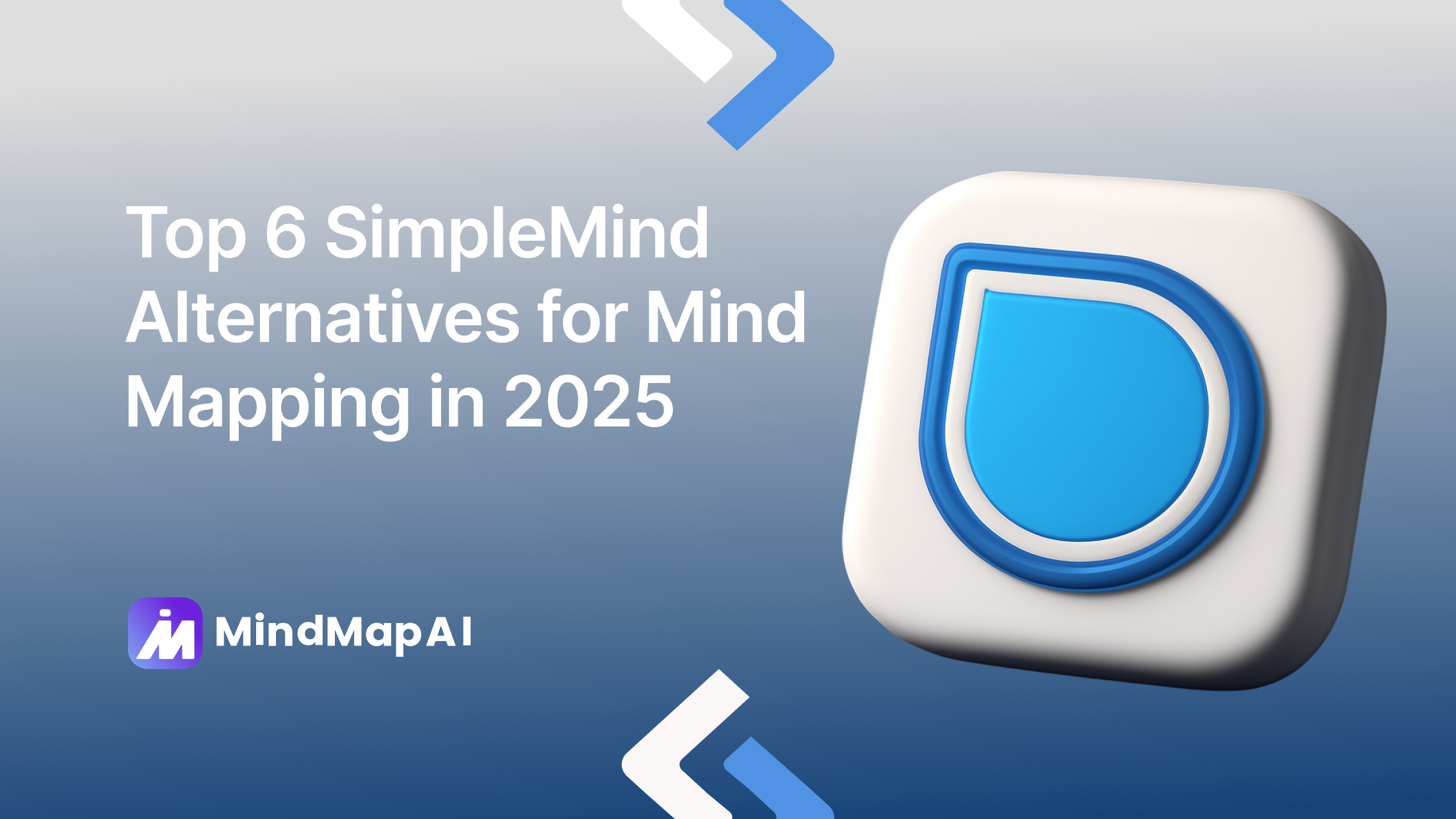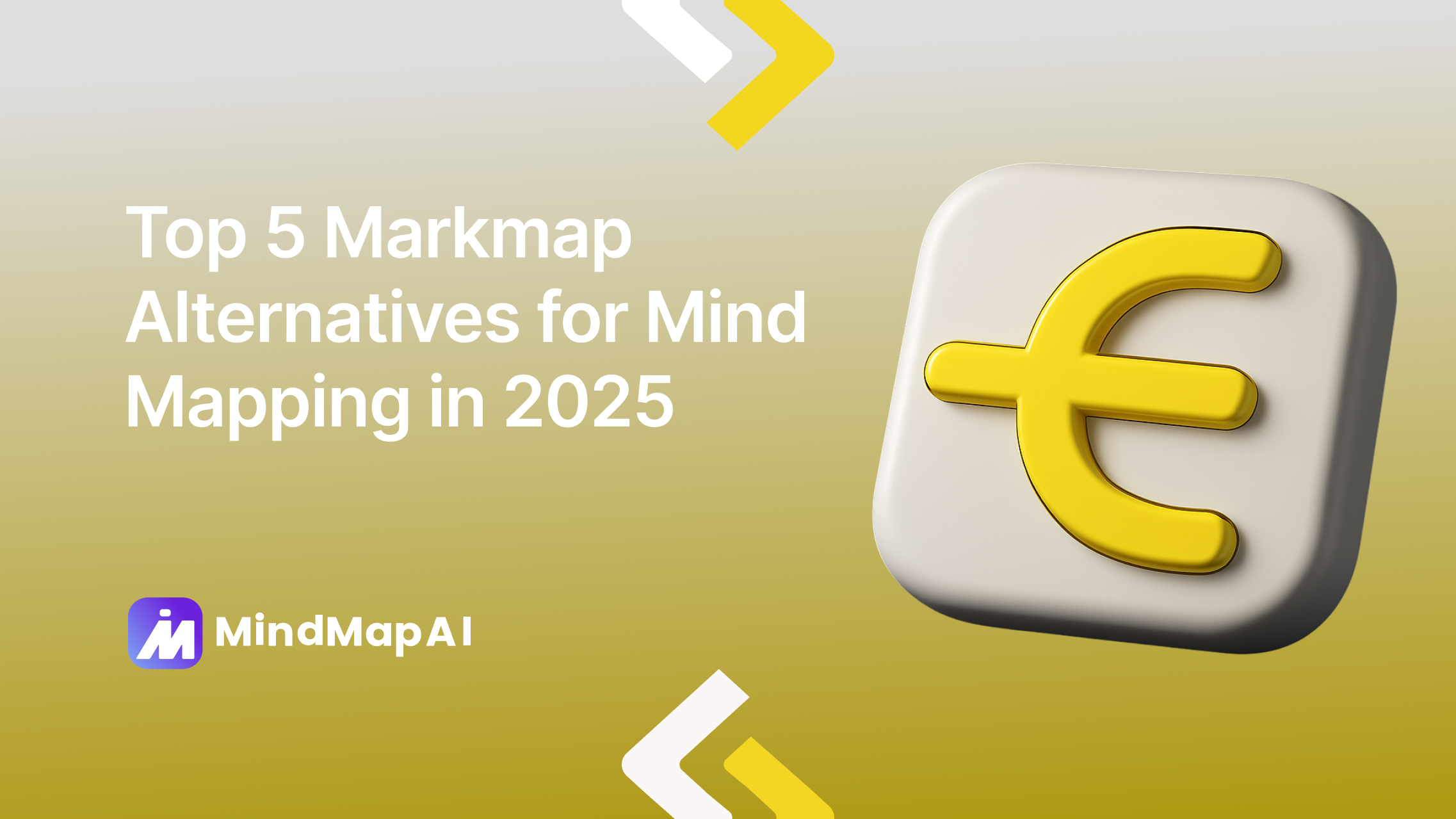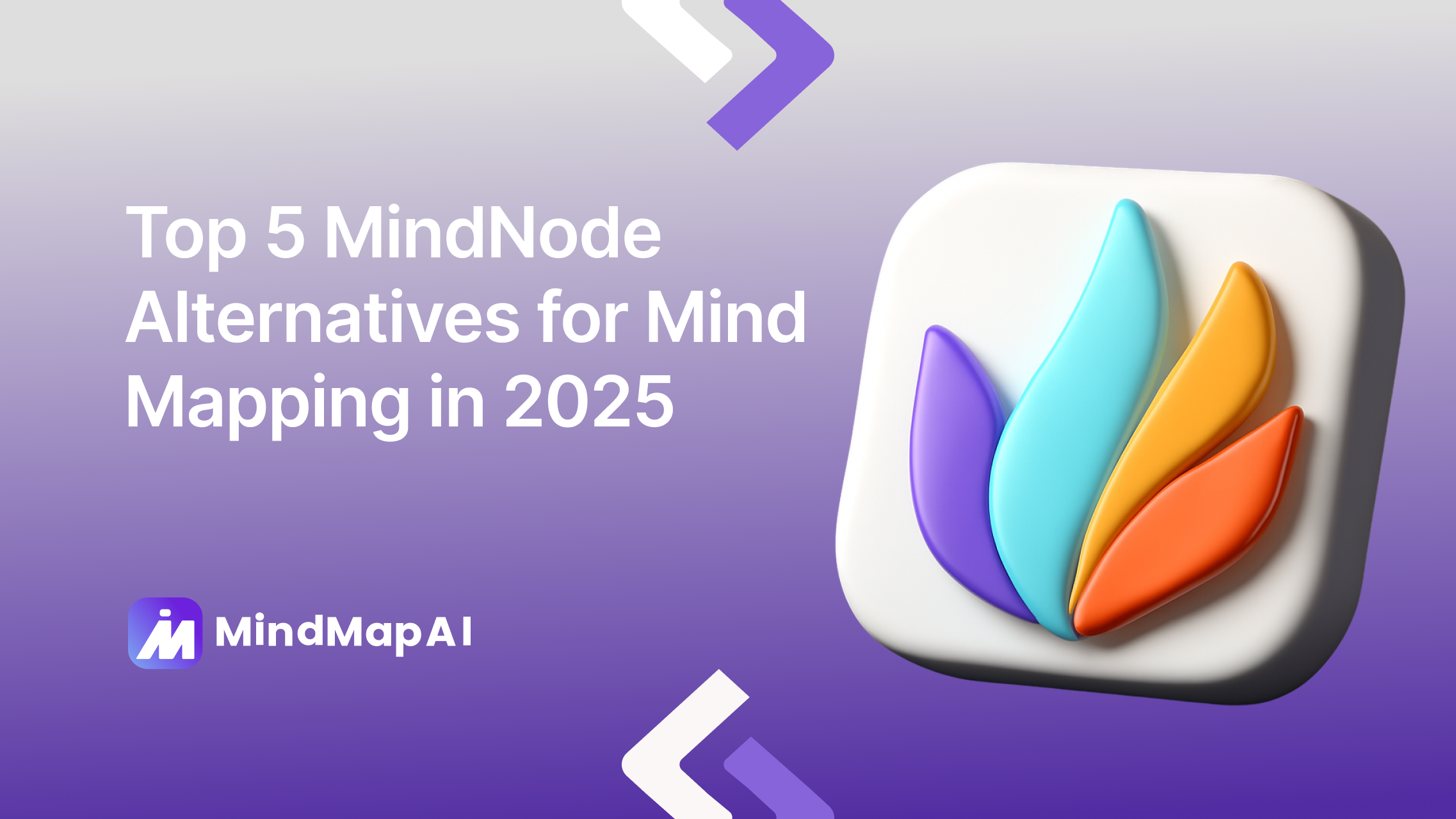
Top 5 MindNode Alternatives for Mind Mapping in 2025
MindNode is a beautifully designed mind mapping tool that focuses on simplicity and elegance, offering both visual brainstorming and organized outlining features. With its intuitive interface, seamless collaboration, and the ability to transform ideas into tasks, it’s a go-to for anyone looking to plan and organize thoughts effectively. Its smooth integration with Apple devices and focus on visual clarity makes it a popular choice for users seeking a straightforward, aesthetically pleasing mapping experience.
However, while MindNode is great for creating structured, visually rich maps, it may not provide the depth of content import, or richer project management features some users need. Some might prefer AI tools that handle multi-format content or provide instant idea generation and mapping.
That’s why we’ve rounded up the best MindNode alternatives for 2025, tools that go beyond the basics and faster content conversion, and more flexible customization to enhance the mind mapping process.
Turn your ideas into an AI mind map in seconds
1. MindMap AI

Why it stands out
MindMap AI is a versatile, AI-powered mind mapping tool that allows users to generate mind maps instantly from a wide array of formats like text, PDFs, images, videos, audio files, and CSVs. Unlike MindNode, which is designed only for Apple users and lacks AI features, MindMap AI makes brainstorming faster and more intuitive with its real-time AI Copilot Chat. You can interact with the AI to expand, summarize, or refine your ideas seamlessly. The Second-Order Connections feature helps surface hidden relationships between concepts, making it invaluable for research, audits, and complex planning. In terms of accessibility, MindMap AI is available on web and mobile (iOS/Android), ensuring flexibility across devices without the restrictions that MindNode’s Apple-only platform imposes.
Key Features
Multi-format ingest: Upload text, PDFs, videos, audio, images, and CSV files to create structured mind maps in seconds.

Second-Order Connections: Automatically detects and links related ideas across your map, making it ideal for uncovering hidden patterns or gaps in your thinking.

Copilot Chat and Context Menu: Expand, refine, and summarize your map dynamically using natural language commands or one click.

Effortless sharing and export: Share maps with private/public links and export to PNG, SVG, PDF, Markdown, and CSV.

Cross-device access: Work seamlessly on the web or mobile platforms (iOS/Android).
Pros
Real-time AI chat: Enables continuous brainstorming and idea refinement.
Broad input format support: Including PDFs, audio, video, and CSV unlike MindNode, which only supports manual inputs.
Cross-platform: Available on web, iOS, and Android, unlike MindNode, which is Apple-only.
Flexible export options: Export in various formats such as PNG, SVG, PDF, Markdown, and CSV.
Lifetime plans available: A one-time purchase option for those who prefer not to subscribe annually.
Cons
No real-time collaborative editing: While sharing is easy, collaboration is limited to links instead of live co-editing.
Browser-only app: There’s no native desktop application for Mac, Windows, or Linux.
Limited customization: Compared to MindNode’s visual design options.
Pricing
Free plan: 100 AI credits per month.
Basic: $7.49/month (or $3.74/month when billed yearly, 2,000 credits).
Pro: $14.99/month (or $7.49/month when billed yearly, 5,000 credits).
Lifetime tiers: Available starting at $129 (one-time payment).
2,000-credit add-on: $4.99.
Discover how MindMap AI stacks up against MindNode in features, pricing, and usability
2. MindMup

Why it stands out
MindMup offers a simple and intuitive cloud-based mind mapping solution, making it ideal for users who prioritize real-time collaboration. With seamless integration into Google Drive, it provides unlimited file storage and easy access to shared maps, perfect for teams and educational use. Its free tier is generous for personal use, while paid plans unlock additional features like more storage and advanced functionality.
Key Features
Real-time collaboration with Google Drive integration for effortless teamwork.
Mind map sharing and publishing via shareable links.
Easy export to PDF, PNG, or as a mind map for flexibility.
Pros
Generous free tier with 100MB of storage for personal use.
Fast interface and reliable cloud storage for instant access anywhere.
Simple to share and present mind maps, making it perfect for quick collaborations.
Cons
No Advanced automation.
AI support is limited to Pro and higher-tier plans.
Pricing
Free plan with 100MB storage and basic maps.
Pro at $5/month.
Business at $15/user/month.
3. SimpleMind
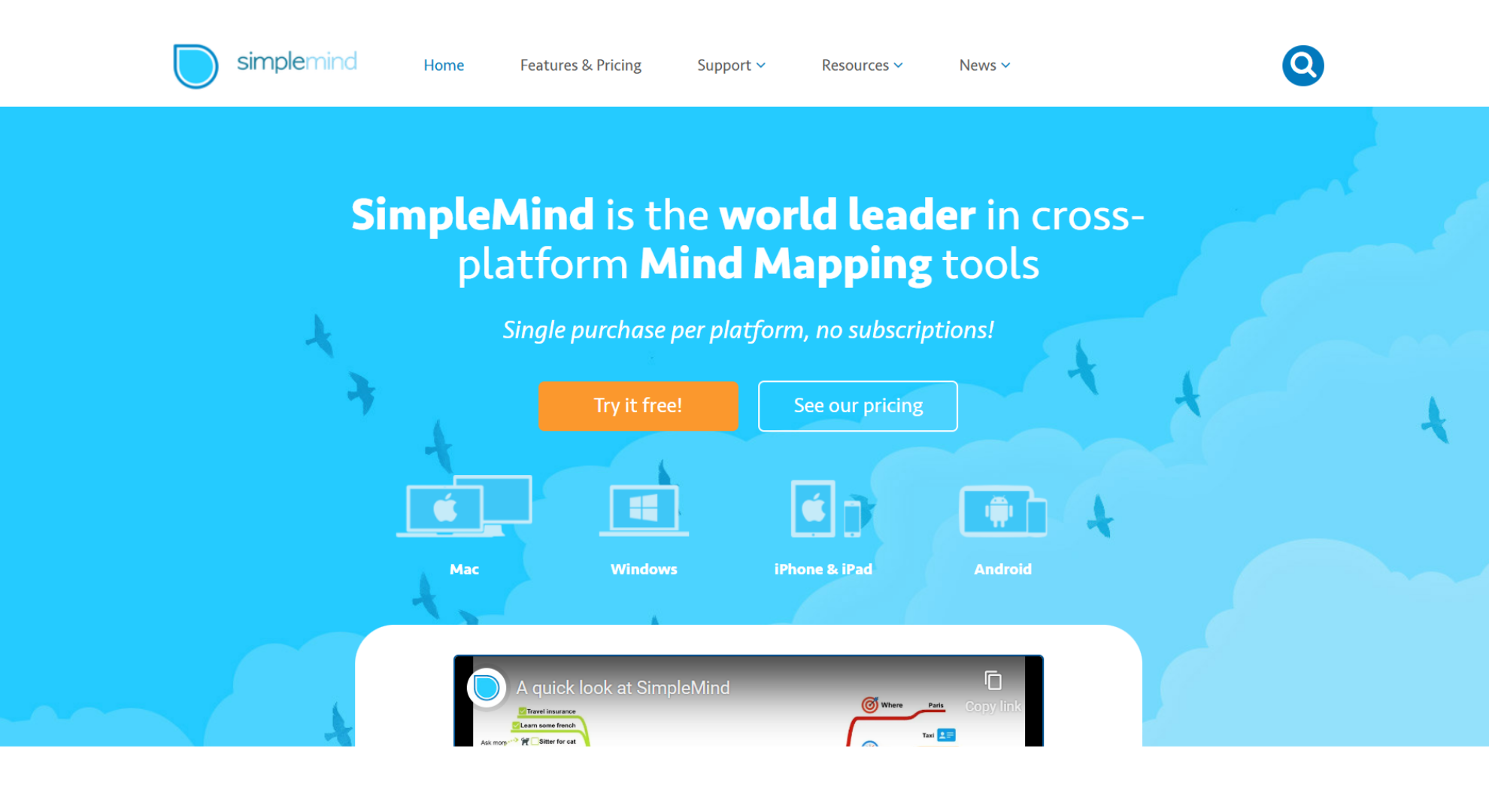
Why it stands out
SimpleMind is a straightforward mind mapping tool that offers a clean and customizable mapping experience. Its cross-platform sync capabilities (Windows, macOS, iOS, Android) make it perfect for users who need to work across multiple devices. With an easy-to-use interface and minimal learning curve, it's ideal for those who want a simple yet effective tool for mind mapping on the go.
Key Features
Cloud syncing across devices for seamless access to your mind maps.
Flexible layout options that support different mind mapping styles.
Presentation mode for displaying your mind maps in a polished format.
Pros
Supports offline functionality on both mobile and desktop for uninterrupted work.
Syncs across multiple platforms, making it versatile for different devices.
Simple, no-frills design with an intuitive interface and minimal learning curve.
Cons
Limited export options for free users, with more advanced features behind a paywall.
Pricing
Free plan with limited maps and fewer features.
Pro version at $24.99 (one-time fee).
Mobile app for $6.99 (available on iOS/Android).
4. Markmap
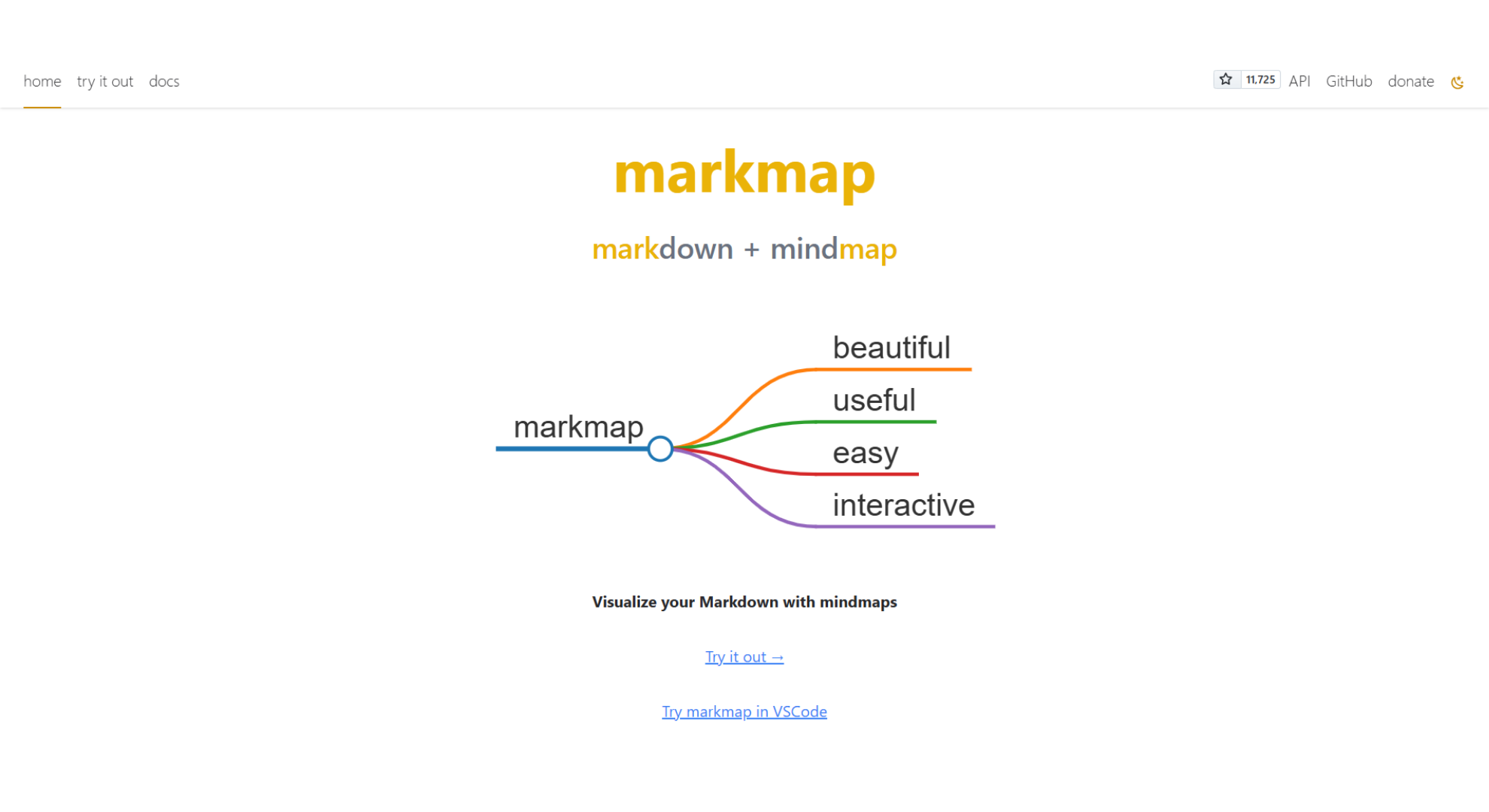
Why it stands out
Markmap offers a unique experience by using markdown to create interactive mind maps. Its ability to dynamically render maps directly from markdown files makes it an ideal tool for developers or content creators who are already comfortable with text-based mapping. As a fully open-source and customizable platform, Markmap stands out in the developer community for its flexibility and ease of integration into web projects.
Key Features
Real-time markdown-to-map rendering for dynamic mind maps.
Fully open-source and customizable for personal or professional use.
Great for integrating into web development projects.
Pros
Completely free and open-source with no sign-up required.
Ideal for users familiar with Markdown for quick map generation.
Easily embeddable in websites for seamless integration.
Cons
Lacks AI features for automatic map generation or refinement.
Steep learning curve for beginners who are not familiar with Markdown or web development.
Pricing
Free: Open-source, self-hostable tool.
5. Inspiration
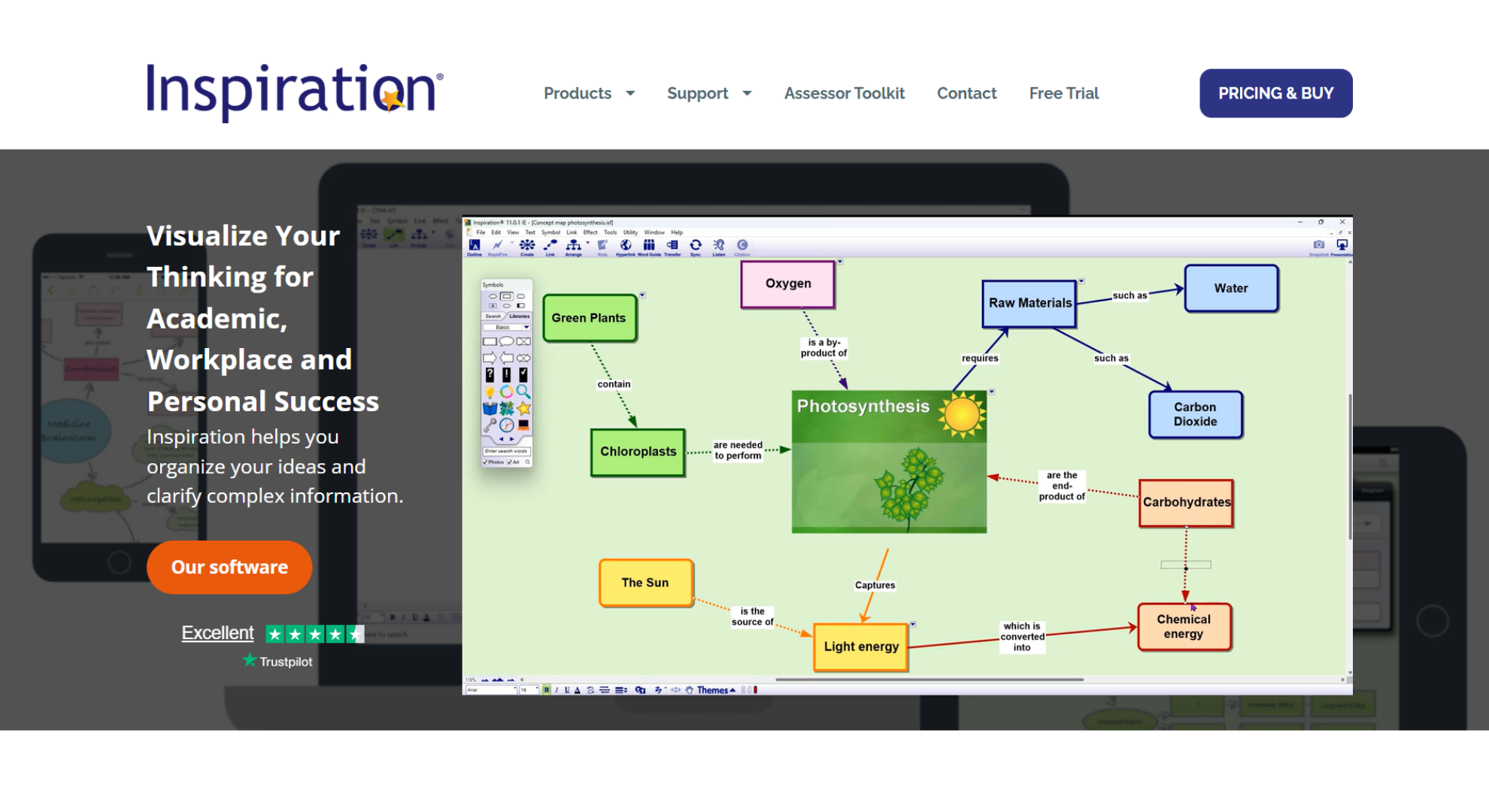
Why it stands out
Inspiration offers a versatile tool that blends mind mapping, outlines, and concept diagrams, making it ideal for students and educators. Its user-friendly interface simplifies the creation of clear, easy-to-understand mind maps, while built-in lesson planning tools help educators structure lessons effectively. Inspiration is particularly well-suited for classroom use, providing a reliable solution for visual learning.
Key Features
Intuitive diagramming specifically designed for teachers and students.
Built-in lesson planning tools to organize educational content.
Supports both concept maps and outlines for varied content organization.
Pros
Perfect for classroom environments, fostering visual learning.
Intuitive and easy-to-navigate interface, making it accessible to all skill levels.
Available for both Windows and macOS, providing flexibility for different devices.
Cons
Lacks AI integration for automatic map generation or content refinement.
Limited cloud syncing options for collaboration across devices.
Pricing
One-time purchase at $69.95.
Educational discounts available.
Find the perfect match for your workflow
Comparison at a Glance
| Tool | Entry price | AI quota | Stand-out strength |
|---|---|---|---|
| MindMap AI | From $3.74/mo (annual) | 2,000–5,000 credits/mo | Multi-format ingest + Copilot Chat |
| MindMup | Free (with limits) | – | Google Drive sync & real-time collaboration |
| SimpleMind | $6.99 (mobile) | – | Cross-platform syncing & offline use |
| Markmap | Free (open-source) | – | Markdown-to-map rendering |
| Inspiration | $69.95 (one-time) | – | Education-focused diagramming |
FAQ
Q: What makes MindMap AI a better alternative to MindNode?
A: While MindNode excels in simplicity and visual design, MindMap AI offers advanced AI-powered features, such as multi-format content ingestion, AI Copilot Chat for real-time refinement, and Second-Order Connections to uncover hidden relationships between ideas. Unlike MindNode, MindMap AI is also cross-platform (available on web and mobile), making it more accessible for users who need flexibility.
Q: Which MindNode alternative provides the best value for money?
A: MindMap AI stands out with its affordable pricing plans, starting from just $3.74/month (annual billing), offering up to 5,000 AI credits/month. Unlike other alternatives like MindNode or Inspiration, MindMap AI gives you access to powerful AI features without hefty one-time fees, making it a cost-effective option for both individual users and teams.
Q: Is MindMap AI suitable for mobile use compared to MindNode?
A: Yes, MindMap AI is designed to work seamlessly across devices, including web and mobile (iOS/Android). MindNode, however, is restricted to Apple devices. If you're looking for a mind mapping tool that works on all your devices, MindMap AI’s cross-platform functionality gives you the flexibility that MindNode lacks.
Final Takeaway
MindNode excels at combining simplicity with powerful visuals for brainstorming and planning, but the best MindNode alternatives bring even more to the table, whether it’s AI-powered automation, broader file compatibility, or specialized tools for team collaboration and project management.
MindMap AI stands out among these options. It allows you to create mind maps instantly from PDFs, images, videos, and audio files, turning content into structured visuals with features like AI Expand, Summarize, and Focus Topic. With flexible export formats and cross-platform syncing, MindMap AI provides a seamless, intelligent mind mapping experience for both individual users and teams.
If you’re looking for an AI-powered mind mapping tool that adds automation and intelligent features to the elegance of MindNode, MindMap AI is an alternative well worth considering in 2025.






